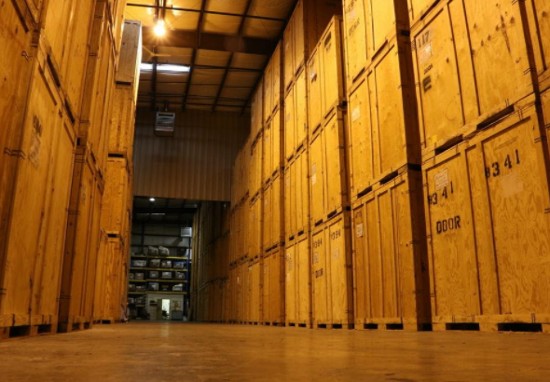Please welcome a new contributor to 21st Century Tech Blog, David Madden. David is an efficiency expert, and the founder and President of Container Exchanger. His passion is to save companies money through repurposed and reusable industrial packaging such as plastic and metal bulk containers, Gaylord boxes, bulk bags, pallets, IBC totes and industrial racks. David’s topic today addresses the challenge that COVID-19 has created on global supply chains and how companies are mitigating and adapting to a new reality.
My wife and I recently had our own supply chain experience. We have been refurbishing our apartment after being stuck in it for the last two years because of COVID, looking at the same beige walls, black bookcases, and a futon we never use. We repainted. No problem. But when we ordered a sofa trundle bed we ran up against a supply chain bottleneck.
We saw an item we wanted online and went to the store to see it in person. We then ordered it. It was September. We were given a late October delivery date because it was coming from Asia. That delivery date slipped to late November, and then December. Apparently, our sofa bed got to North America but was stuck in the Port of Los Angeles along with thousands of other containers packed with imports.
We finally cancelled and went to a different store that produced homegrown Canadian furniture and guaranteed delivery in less than a week. We paid close to a thousand dollars more for our purchase but we no longer had the supply chain headache. Recently, the CBS news program, 60 Minutes, ran a piece describing the very problem with global supply chain bottlenecks in the port of Los Angeles that likely had befouled our sofabed purchase.
Even after COVID-19 passes the problem of global supply chain bottlenecks may remain as geopolitics, climate change and other issues further challenge the business model that led to offshoring of so much of North America’s manufacturing in the last 40 years. I hope you enjoy the read and feel free to comment.
_______________________________________________________________________
The chaos caused by COVID-19 may be responsible for as much as $4 trillion in lost revenue based on U.S. and European company recent reports. Businesses of all sizes are scrambling to access products and supplies needed to manufacture goods, exacerbated by a global supply chain that has become increasingly complex in the last few decades because of outsourcing from all over the world. A single delay can wreak havoc throughout the supply chain, leading to higher prices and long wait times for both businesses and consumers.
How are companies mitigating these problems during the pandemic? It’s all about them taking control, avoiding potential gaps and increasing visibility in their supply chain.
Evaluate Potential Risk
Companies should start by analyzing their current supply chain operations and identifying possible weak spots. If a business has suffered shortages and delays in the last 18 months, it should pinpoint the cause to prevent it from happening again. With players of all sizes becoming increasingly reliant on one another, a business needs to know who supplies its suppliers. Only then can it begin to develop a risk profile and develop contingency plans.
Once a business has all this information it is ready to respond to changing conditions caused by extreme weather events, political tensions, cyberattacks, shifting health guidelines and port congestion challenges.

Planning Contingencies
How do you avoid the worst-case scenarios caused by what we previously have described? A good strategy is to source products and materials from more than one supplier and spread them out over different countries and locales to minimize production delays. Different countries have different regulations. Shortages in one country may not be reflective of what is happening in another.
A business should also look at quality, on-hand inventory, and the reputation of the suppliers it chooses with regulatory bodies. An alternative is a business could look at additive manufacturing to 3D print parts and supplies it needs onsite. Additive manufacturing is becoming increasingly popular and can alter the business’ dependence on overseas suppliers while at the same time giving it better quality control.
Implementing New Technology
A business should consider updating its operations by deploying new technologies such as automation which can reduce cycle time and labour costs while also addressing such issues as infectious disease spread within the workplace.
Bringing in new technologies comes with a price. A business needs to budget for and prioritize preventative maintenance, and source replacement parts to prevent unexpected downtime.
Collecting Operational Data
Implementing the Internet of Things (IoT) through the addition of data collection technology to all aspects of business operations is becoming a priority in this day and age. Every aspect of production, warehousing, and inventory management can be tracked using smart cameras and scanners allowing employees to spot problems in real-time and reducing the chance for human error.
Preparing for Long Wait Times
Businesses today face extremely long wait times when it comes to the shipping and delivery of products, and their customers are less than thrilled. Products sitting idle in a container on a dock or ship can easily be damaged or stolen. Businesses, therefore, need to develop inventory strategies that address the long wait by storing goods in transit in treated wooden crates. These types of containers are available in various shapes and sizes and are relatively inexpensive to produce.

Increasing Visibility
Visibility is key to avoiding delays throughout a business’ supply chain. The more a company knows about its inventory, the better it will be able to fend off possible delays. That’s why it’s best to keep products within view when sitting on the shelf.
Companies can store parts and supplies in industrial metal bins for added protection. Workers can identify and count contents in these types of containers quickly when conducting a warehouse operations walkthrough.
The scars of the COVID-19 pandemic will live with us for a long time. The global supply chain as it was before the virus will likely never be the same. For businesses, disruptive change may become a way of life. But implementing the strategies described above should mitigate the worst aspects of supply chain bottlenecks and set a business up for further success in the 21st century.









